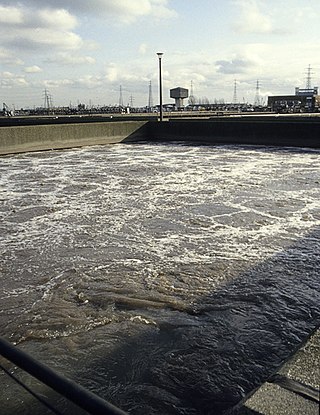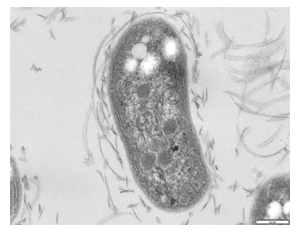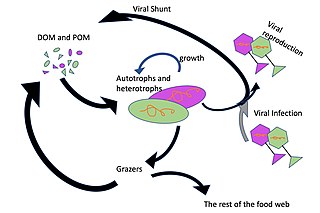
University of Arizona Biosphere 2 is an American Earth system science research facility located in Oracle, Arizona. Its mission is to serve as a center for research, outreach, teaching, and lifelong learning about Earth, its living systems, and its place in the universe. It is a 3.14-acre (1.27-hectare) structure originally built to be an artificial, materially closed ecological system, or vivarium. It remains the largest closed ecological system ever created.

A life-support system is the combination of equipment that allows survival in an environment or situation that would not support that life in its absence. It is generally applied to systems supporting human life in situations where the outside environment is hostile, such as outer space or underwater, or medical situations where the health of the person is compromised to the extent that the risk of death would be high without the function of the equipment.

Closed ecological systems or contained ecological systems (CES) are ecosystems that do not rely on matter exchange with any part outside the system.
BIOS-3 is an experimental closed ecosystem at the Institute of Biophysics in Krasnoyarsk, Russia.

The Sabatier reaction or Sabatier process produces methane and water from a reaction of hydrogen with carbon dioxide at elevated temperatures and pressures in the presence of a nickel catalyst. It was discovered by the French chemists Paul Sabatier and Jean-Baptiste Senderens in 1897. Optionally, ruthenium on alumina makes a more efficient catalyst. It is described by the following exothermic reaction:

The activated sludgeprocess is a type of biological wastewater treatment process for treating sewage or industrial wastewaters using aeration and a biological floc composed of bacteria and protozoa. It is one of several biological wastewater treatment alternatives in secondary treatment, which deals with the removal of biodegradable organic matter and suspended solids. It uses air and microorganisms to biologically oxidize organic pollutants, producing a waste sludge containing the oxidized material.
Controlledecological life-support systems are a self-supporting life support system for space stations and colonies typically through controlled closed ecological systems, such as the BioHome, BIOS-3, Biosphere 2, Mars Desert Research Station, and Yuegong-1.

Nitrobacter is a genus comprising rod-shaped, gram-negative, and chemoautotrophic bacteria. The name Nitrobacter derives from the Latin neuter gender noun nitrum, nitri, alkalis; the Ancient Greek noun βακτηρία, βακτηρίᾱς, rod. They are non-motile and reproduce via budding or binary fission. Nitrobacter cells are obligate aerobes and have a doubling time of about 13 hours.

In oceanic biogeochemistry, the f-ratio is the fraction of total primary production fuelled by nitrate. The ratio was originally defined by Richard Eppley and Bruce Peterson in one of the first papers estimating global oceanic production. This fraction was originally believed significant because it appeared to directly relate to the sinking (export) flux of organic marine snow from the surface ocean by the biological pump. However, this interpretation relied on the assumption of a strong depth-partitioning of a parallel process, nitrification, that more recent measurements has questioned.

Secondary treatment is the removal of biodegradable organic matter from sewage or similar kinds of wastewater. The aim is to achieve a certain degree of effluent quality in a sewage treatment plant suitable for the intended disposal or reuse option. A "primary treatment" step often precedes secondary treatment, whereby physical phase separation is used to remove settleable solids. During secondary treatment, biological processes are used to remove dissolved and suspended organic matter measured as biochemical oxygen demand (BOD). These processes are performed by microorganisms in a managed aerobic or anaerobic process depending on the treatment technology. Bacteria and protozoa consume biodegradable soluble organic contaminants while reproducing to form cells of biological solids. Secondary treatment is widely used in sewage treatment and is also applicable to many agricultural and industrial wastewaters.

A primarylife support system (PLSS), is a device connected to an astronaut or cosmonaut's spacesuit, which allows extra-vehicular activity with maximum freedom, independent of a spacecraft's life support system. A PLSS is generally worn like a backpack. The functions performed by the PLSS include:
This is a glossary of environmental science.

The International Space Station (ISS) Environmental Control and Life Support System (ECLSS) is a life support system that provides or controls atmospheric pressure, fire detection and suppression, oxygen levels, proper ventilation, waste management and water supply. It was jointly designed and tested by NASA's Marshall Space Flight Center, UTC Aerospace Systems, Boeing, Lockheed Martin, and Honeywell, inc.

Microalgae or microscopic algae grow in either marine or freshwater systems. They are primary producers in the oceans that convert water and carbon dioxide to biomass and oxygen in the presence of sunlight.
Bioregenerative life support systems (BLSS) are artificial ecosystems consisting of many complex symbiotic relationships among higher plants, animals, and microorganisms. As the most advanced life support technology, BLSS can provide a habitation environment similar to Earth's biosphere for space missions with extended durations, in deep space, and with multiple crews. These systems consist of artificial ecosystems into which plants and microorganisms that allow oxygen production, carbon dioxide fixation of carbon, water purification, waste recycling, and production of foods. In these systems, photosynthetic organisms would be used as plants and algae that provide biomass for food and oxygen, as well as microorganisms that degrade and recycle waste compounds generated by human activity, as well as unused plant debris in food.

Angelo Vermeulen is a Belgian space systems researcher, biologist and artist. In 2009 he co-founded SEADS, an international transdisciplinary collective of artists, scientists, engineers, and activists Its goal is to reshape the future through critical inquiry and hands-on experimentation. Biomodd is one of their most well-known art projects and consists of a worldwide series of co-created interactive art installations in which computers coexist with internal living ecosystems. For the last ten years, he has been collaborating with the European Space Agency’s MELiSSA program on biological life support for space and in 2013 he was crew commander of one of the NASA-funded HI-SEAS Mars mission simulations in Hawai'i. Currently, he works at Delft University of Technology on advanced concepts for interstellar exploration. His work proposes a bio-inspired design approach to deal with the unpredictability inherent to interstellar travel. He is a Senior TED Fellow and was selected in 2017 as one of the Top 5 Tech Pioneers from Belgium by the newspaper De Tijd.
Lunar Palace 1, Moon Palace 1 or Yuegong-1 is a Chinese research facility for developing a Moon base. It is an environmentally closed facility where occupants can simulate a long-duration self-contained mission with no outside inputs other than power/energy.
Dissimilatory nitrate reduction to ammonium (DNRA), also known as nitrate/nitrite ammonification, is the result of anaerobic respiration by chemoorganoheterotrophic microbes using nitrate (NO3−) as an electron acceptor for respiration. In anaerobic conditions microbes which undertake DNRA oxidise organic matter and use nitrate (rather than oxygen) as an electron acceptor, reducing it to nitrite, and then to ammonium (NO3− → NO2− → NH4+).

Eu:CROPIS was a life science satellite developed by the German Aerospace Center (DLR) and intended to investigate the possibility of growing plants in different levels of gravity, such as that of the Moon and Mars, as a sustainable food source using human urine for moisture and as the source of fixed nitrogen.

The viral shunt is a mechanism that prevents marine microbial particulate organic matter (POM) from migrating up trophic levels by recycling them into dissolved organic matter (DOM), which can be readily taken up by microorganisms. The DOM recycled by the viral shunt pathway is comparable to the amount generated by the other main sources of marine DOM.



















